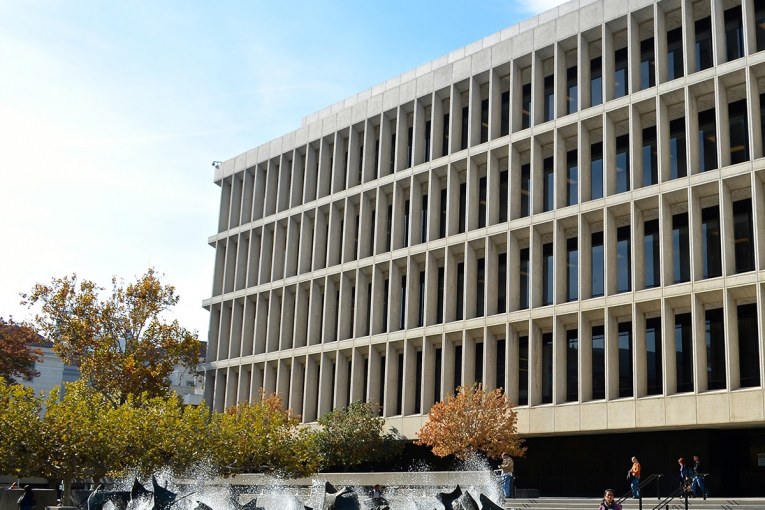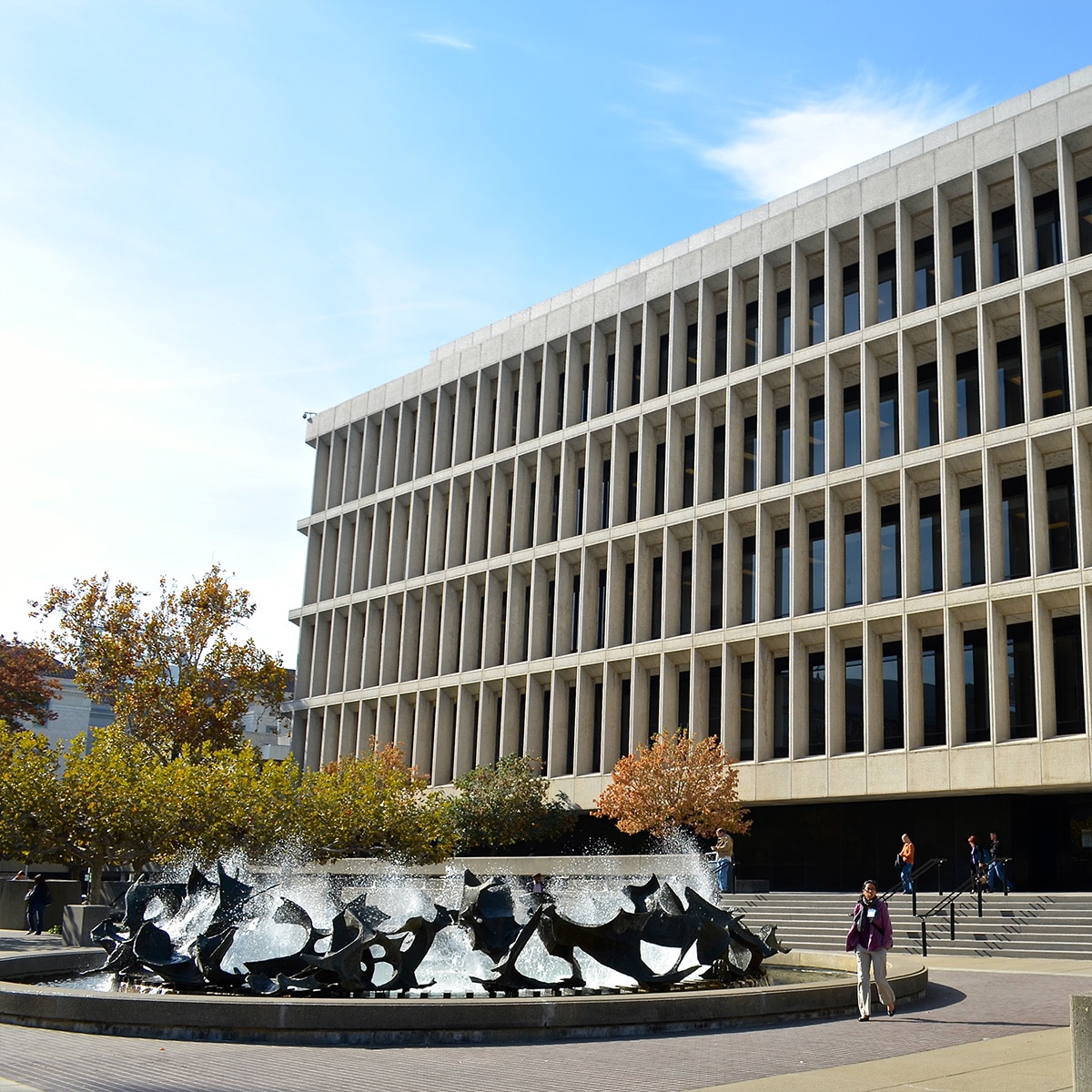
 By Aishwarya Rajan and Natasha Feuerstein
By Aishwarya Rajan and Natasha Feuerstein
SACRAMENTO, CA – Former Elk Grove peace Officer Bryan Schmidt found himself at the center of a use-of-force internal affairs investigation following an incident with a robbery suspect outside of Burlington Coat Factory in Sacramento County on June 5, 2019.
Multiple surveillance videos and officer accounts displayed the defendant kicking the robbery suspect in the head while he lay on his stomach, rendering him unconscious for a few moments. Schmidt then committed other acts of violent force.
Schmidt appeared in Sacramento County Superior Court last week, facing felony criminal charges of battery and unlawful beating by a public officer.
The incident and alleged excessive use of force was never reported, but Schmidt was released from his Elk Grove Police Dept. duties shortly after a lawsuit was filed.
Sgt. Daniel Templeton was the primary investigator in the case against Schmidt. Templeton collected and analyzed available store, police car and body cam footage, as well as a number of witness statements.
Two male suspects had attempted to steal merchandise from the store, but their efforts proved to be unsuccessful after a physical altercation ensued with multiple Loss Prevention Officers just inside the store entrance.
Three dispatched Elk Grove police officers responded to the several 911 calls, with four or more self-dispatched officers following as back-up.
Defendant Schmidt was one of the dispatched officers, and, according to Sgt. Templeton, Schmidt was the third officer to arrive on the scene.
During the court proceeding, Prosecutor Wilson played the store surveillance video. It showed the two suspects attempting to steal merchandise piled inside a cart.
The first suspect was seen shaking hands with one of the Loss Prevention Officers before exiting the store while the second suspect was initially seen in an altercation between several Loss Prevention Officers.
The second suspect was then seen shirtless as he exited the store just before his physical altercation with Officer Schmidt.
Officer Coleman and Officer Trudeau were the first officers on the scene. Coleman’s patrol car footage and testimony, as relayed by Sgt. Templeton, detailed the events leading up to the incident with the defendant, Officer Schmidt.
Officer Coleman told Sgt. Templeton that he saw the first suspect exit the store and walk in the direction of the patrol car. The suspect complied with Coleman’s command for him to get on the ground, and lay on his stomach.
Soon after this, the second suspect exited the store and also advanced toward the patrol car. Officer Coleman gave this suspect the same directions, but he failed to comply.
Eventually, the second suspect made a “burpee-like maneuver” to get on the ground using his fists and lay on his stomach.
Officer Coleman commanded that the suspect put his arms out “like an airplane” but the suspect failed to comply. His hands remained by his waistband area.
Templeton elicited that Officer Coleman was concerned that, due to the location of the suspect’s hands, he may have had a concealed weapon. This information was assumed by his partner, Officer Treadau, who heard one of the 911 callers say that both suspects were “throwing up gang signs.”
In the defense’s cross-examination, Josh Olander asked Sgt. Templeton if the waistband was the most dangerous place for a suspect, to which he is corrected that the hands are.
“So, watch the hands, and watch the waistbands? Because you could get killed, correct?” asked Olander.
Sgt. Templeton concurred.
Upon her examination, Prosecutor Williams played Officer Coleman’s patrol car footage for the court. In the video, Officer Coleman is seen providing the second suspect with directions while his firearm was pointed at the suspect.
Shortly after, another patrol car soon arrived. Sgt. Templeton identified this car as belonging to the defendant, who was seen advancing rapidly toward the second suspect who was lying on the ground.
The footage shows Schmidt yelling and then kicking the suspect in the head with his left boot. He then proceeded to straddle the suspect and kick his hands away from his body.
When asked about the physical effect Schmidt’s kick to Mendoza’s head caused, Sgt. Templeton responded, “In this video, coupled with my investigation and other videos, the strike from Mr. Schmidt’s left boot caused Mr. Mendoza’s head to come in contact with the concrete on the ground, and it appeared to me that Mr. Mendoza possibly lost consciousness or was dazed by the strike.”
Judge Laurel White interjected at this point and asked what Sgt. Templeton saw that led him to conclude the suspect lost consciousness.
Sgt. Templeton explained that Mendoza was active before the kick, but after the kick, his body and head appeared to go limp. When he regained consciousness, he said something like, “Let’s go, let’s go,” but this speech was slurred and slower than it had been in other footage that he had reviewed.
According to the sergeant, it took approximately one minute and 20 seconds before the suspect was searched for weapons.
Instead of searching the suspect after handcuffing him, Schmidt walked up to another officer, whom Sgt. Templeton identified as Sgt. Will Hancock. Their conversation about the incident was captured by the body camera,
“He was just like smiling, giving a smirk and bam! I f***kick him in his head,” Schmidt is heard saying in the video.
Prosecutor Wilson then moved on to ask Sgt. Templeton about Lt. Michael Press, who was interviewed by the Elk Grove police department as a use-of-force expert.
Lt. Press was given access to all the evidence Sgt. Templeton collected from his investigation into the incident.
According to Lt. Press’s interview, he told Sgt. Templeton that the second suspect’s position on the ground was “passive.” Additionally, he described Mendoza’s position as one of “disadvantage” compared to the officers who were at an “advantage” given Mendoza’s positioning on the ground.
This position of “disadvantage” refers to the fact that, according to Lt. Press, the suspect was not in a fighting stance, nor was he in a position to move or attack officers or move to grab a weapon, especially considering his build.
Sgt. Templeton further elicited that all three officers on the scene had their firearms pointed at Mendoza at the time of the altercation with Mr. Schmidt.
The defense re-visited the discussion of Mendoza being in a disadvantaged position. “This does not mean that he was no longer a threat, correct?” Olander asked Sgt. Templeton, who said the suspect might have had access to his waistband which could have had a concealed weapon.
When the prosecution asked if Lt. Press felt the defendant could have engaged in any other methods to suppress the situation without the alleged, unlawful force, Sgt. Templeton included several suggestions.
He included that the defendant could have waited in the tree line where his body camera showed him when he initially advanced towards the suspect. He also could have waited for officers or put a plan of action together. Further, Schmidt could have moved toward Officer Coleman’s patrol car to formulate a plan of action, while waiting for other officers.
Sgt. Templeton claimed that Lt. Press indicated that these options would have been more adequate considering both suspects were in a passive position, so it was time to “slow things down.”
Additionally, Lt. Press relayed that the type of strike Mr. Schmidt committed was likely to cause great bodily injury, or even death. He was even concerned that the suspect would sustain a concussion.
According to reports, the patrol car that transported the suspects to jail had to make a stop so that the second suspect could vomit. Video footage showed the suspect, the victim to Mr. Schmidt’s blows, vomiting.
With this evidence, the defense offered the counter argument that the suspect vomited due to the crash of an adrenaline high following the events of the robbery.
Following this testimony, Prosecutor Wilson asked Sgt. Templeton about how the second suspect was feeling upon arrival to jail. He explained that Mendoza was not feeling well and expressed that he had pain at his head.
In an attempt to contradict this statement, the defense asked Sgt. Templeton about the officer who transported the second suspect to jail. Sgt. Templeton explained that this officer did not believe any medical treatment was necessary and did not offer any based on his observations of the suspect.
The officer’s observations included the suspect’s ability to answer simple questions and their search for signs of physical injury. Based on his reports, it was concluded that the suspect had a normal demeanor and also spoke normally.
The nurses at the jail concurred, indicating that Mendoza did not need to go to the hospital.
Despite these reports, the suspect visited the hospital on two separate occasions after the incident. The second time, the suspect underwent surgery on his head.
Upon the examination of witness Sgt. Templeton, he explained that their use-of-force expert, Lt. Press, felt Schmidt showed prior intent of what he planned to do to Mendoza when he was heard saying, “It ain’t gonna be a good day for you, son.”
The sergeant said he would not characterize the statement “it ain’t going to be a good day for you” as a warning, but “could see how it could be perceived as a warning.”
He further expounded that “we are not trained to give statements like that; we are trained to give precise statements of time…the statement is not a tactic that we are trained.”
Prefacing arguments made by the prosecution, DA Olander highlighted that the statement made by Schmidt could be seen as a warning rather than the intent for assault.
Through footage, it was made evident that the two Loss Prevention Officers had struck the victim in the head and face area shortly before he fell to the ground, causing an injury to his lip.
Olander stated that they “punched him so hard it knocked out Mendoza’s gold teeth and what was referred to as his ‘grill’” which was validated by Templeton.
Prosecutor Wilson countered the questioning of the defense by asking the witness if the “length of time [from handcuffing Mendoza, and the time he was searched was] significant?”
To this, the Sgt. responded that if it were him, he would have immediately searched the victim. Further, “if the reason a strike was delivered was due to the belief that this person, Mr. Mendoza, had a firearm…immediate search for that weapon to confirm or dispel if that was a gun,” would be necessary.
Rather than observing this immediate search, it appeared to him that even Officer Coleman “didn’t have any sense of urgency…with no concern for the gun” based on the video.
He was not alone with this opinion. Lt. Press had previously deemed that a delay for search, as was conducted by the officer’s at the scene, was “illogical and counterintuitive to training.”
Prior to the alleged misconduct of former Officer Schmidt, the video showed the victim pointing to the ground, potentially towards his knees.
Prosecution used this to emphasize the officer’s conduct as unlawful according to the victim’s claim that “he had a prior knee injury from a work incident and that he was trying to convey that to officers to give him time and patience to get to the ground.”
To this statement, Olander retrieved the validation that the officers were unaware of Mendoza’s knee injury at the time of the incident.
Before closing the hearing for the day, Judge White requested information on dispatch proceedings for officers, which supported a claim previously validated by the defense, that the actions taken by the defendant were protective measures for his fellow officers.
Templeton explained that for Officer Schmidt to have acted, knowing that he had back up, would require that he had information from radio communication, and their mapping data.
He relayed, “No, Mr. Schmidt wouldn’t have known where officers were coming from…that’s a lot for an officer to do.” He was not aware of the additional four or more officers in line to respond to the scene.
In addition to this information, Judge White expressed that, she “would find great value in some specific briefing by way of argument…addressing the issue of lawful necessity…and what constitutes unreasonable or reasonable force, in this case, using these facts, and whether Mr. Schmidt used more force than necessary under the totality of the circumstances…”
She also requested that both parties confine their questioning and arguments to subjects that focus on the lawfulness of the former officer’s action.
“I am not particularly persuaded by the statement attributed to Lt. Press concerning Mr. Schmidt’s statement of, “it’s going to be a bad day for you” as convincing his intent. I don’t find that particularly relevant to whether he acted reasonably or unreasonably.
“I am also not particularly guided by Mr. Press’s ultimate finding of unreasonable conduct, I can find that on my own…so I’m giving little to no weight to the ultimate conclusion.”
The pretrial hearing is set to reconvene on March 24.
 Aishwarya Rajan is a first year Political Science Public Service major and Cognitive Science major at the University of California, Davis. Her various experiences living in her hometown in Danville, California, have shaped her passions to deliver justice through a career in law.
Aishwarya Rajan is a first year Political Science Public Service major and Cognitive Science major at the University of California, Davis. Her various experiences living in her hometown in Danville, California, have shaped her passions to deliver justice through a career in law.

Natasha Feuerstein is a senior at UC Davis majoring in Political Science and minoring in Global Disease Biology. She is originally from Camden, Delaware.
To sign up for our new newsletter – Everyday Injustice – https://tinyurl.com/yyultcf9
Support our work – to become a sustaining at $5 – $10- $25 per month hit the link:




